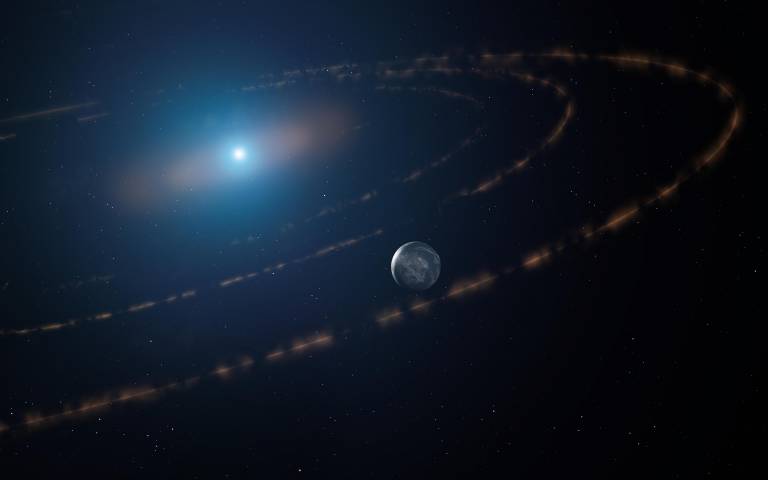A planet that has outlived its star
Located 117 light-years from Earth, the star WD1054-226 is a white dwarf – the remnant of a star the size of our Sun that has reached the end of its life. It’s about the size of Earth, but about as heavy as the Sun. And it’s hot: 20,000 to 30,000 Kelvin on the surface, 20 million Kelvin inside. Fusion processes no longer take place, but it takes about 10 billion years for it to cool down completely – our sun has only been around for five billion years. During this time, of course, a habitable zone can form around the star corpse, benefiting from the residual heat. But are there still planets orbiting in the zone? After all, in its death throes as a red giant, the star has swallowed some of its planets. The Earth, too, will once perish in the heat of the sun.
In the case of WD1054-226, astronomers have good news. They have encountered a planet in its habitable zone – albeit indirectly. In a study published in the Monthly Notices of the Royal Astronomical Society, an international team of researchers measured the white dwarf’s light. In the process, the researchers found distinctive bursts of light corresponding to 65 evenly spaced clouds of planetary debris orbiting the star every 25 hours. Their conclusion: the precise regularity of the orbiting structures – which dim the star’s light every 23 minutes – must be held in such a precise arrangement by a nearby planet.
Lead author Jay Farihi says, “The moon-sized structures we have observed are irregular and dusty (e.g., comet-like) rather than solid, spherical bodies. Their absolute regularity is a mystery we can’t currently explain. One exciting possibility is that these bodies are held in such a regular orbital pattern because of the gravitational influence of a nearby planet. Without this influence, the structures would disintegrate due to friction and collisions. A precedent for this “herding” is the way the gravitational pull of the moons around Neptune and Saturn helps create stable ring structures orbiting those planets.”
Astronomers aren’t completely sure, however. “We can’t observe the planet directly,” Farihi said, “so confirmation would have to come from comparing computer models with other observations of the star and the debris orbiting it.”
This orbit around the white dwarf is thought to have been swept free during its phase of life as a giant star, so any planet that could potentially harbor water, and thus life, would have to have formed entirely from scratch. The area would be habitable for at least two billion years in the case of WD1054-226, including at least one billion years in the future. Planets orbiting white dwarfs are difficult for astronomers to detect because these stars are much fainter than main-sequence stars (like the Sun). So far, astronomers have found only the first evidence of a gas giant (like Jupiter) orbiting a white dwarf.
